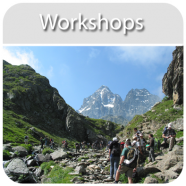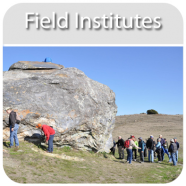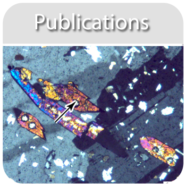 The ExTerra Field Institute and Research Endeavor (E-FIRE) united US scientists studying rocks exhumed from paleo-subduction zones (through ExTerra: Exhumed Terranes) with European colleagues also working on subduction systems (through ZIP: Zooming In between Plates, a Marie Curie training network). E-FIRE Field Institutes gathered ExTerra and ZIP scientists in the field to trace the cycle of rocks and fluids through the subduction process as recorded in Earth’s premier example of a fossil subduction zone: the Western Alps, Europe. Eleven early-stage researchers (ESRs), including PhD students and post-doctoral fellows based at nine different U.S. institutions, collected field data and rock samples to address three overarching research questions:
The ExTerra Field Institute and Research Endeavor (E-FIRE) united US scientists studying rocks exhumed from paleo-subduction zones (through ExTerra: Exhumed Terranes) with European colleagues also working on subduction systems (through ZIP: Zooming In between Plates, a Marie Curie training network). E-FIRE Field Institutes gathered ExTerra and ZIP scientists in the field to trace the cycle of rocks and fluids through the subduction process as recorded in Earth’s premier example of a fossil subduction zone: the Western Alps, Europe. Eleven early-stage researchers (ESRs), including PhD students and post-doctoral fellows based at nine different U.S. institutions, collected field data and rock samples to address three overarching research questions:
- How do elements cycle among crust, mantle and Earth’s surface?
- What are the depths, temperatures, and timescales of rock transformation and fluid release within subduction zones? and
- What is the mechanical behavior of materials within subduction zones?
The projects adopted a variety of approaches to address these questions, including mineralogical and petrological analysis; textural characterization; geochemical analysis of major and trace elements (e.g., HFSE, REE, halogens), stable isotopes (e.g., δ7Li, δ11B, δ13C, δ18O, δ37Cl), and radiogenic isotopes (e.g., U-Th-Pb, Sm-Nd, Rb-Sr); and thermodynamic and geodynamic modeling.





